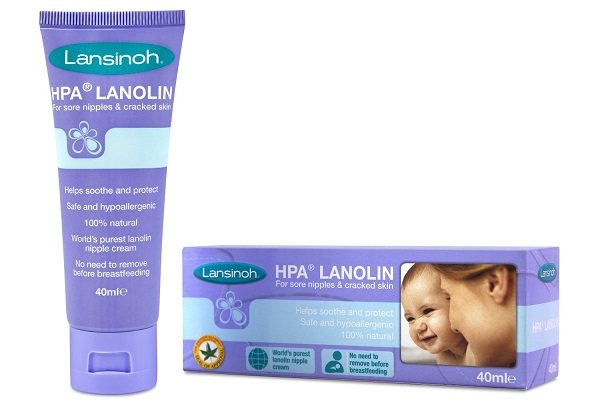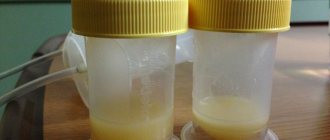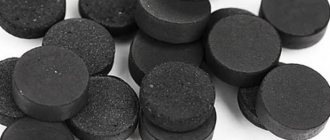Obstetricians often tell new mothers that the head should be the first place to prepare for feeding, not the breast. It is better to find out in advance what difficulties you will encounter after childbirth and how to solve them. Preparing your breasts for feeding is not difficult, but it is better to get acquainted with these rules in advance. After the baby arrives, there will be no time for this.
How to prepare your breasts for feeding
Breastfeeding must be approached with all seriousness, because mother's milk is the key to the health and development of the baby. It has long been proven that it is much better than artificial, and breast problems can affect the transition to formula. To prevent this from happening, you should take a responsible approach to the feeding process.
To begin with, a pregnant woman can ask her mother, grandmother, or older sister what problems they encountered during lactation. Heredity very often manifests itself in this matter. If everything went well for older relatives, this also does not mean that you can relax, but you should not be nervous either. The following tips will help the expectant mother get into the right frame of mind.
Positive attitude. The main thing is to understand that any breast, even the most problematic, switches to lactation mode on its own during pregnancy. The body itself launches a program to prepare. During this period, a woman is advised to enjoy her position and get plenty of rest.
Balanced diet. During pregnancy, you should try to eat right. A high-quality menu benefits not only the fetus, but also the mother herself, because she will need a lot of effort to care for her baby. In addition, during breastfeeding, the baby will literally pull vitamins and other useful substances from the mother.

Understanding information about putting a baby to the breast. Obstetricians advise reading in advance how to properly feed your baby. This will save the mother from unnecessary worries. Just don’t read literature written by authors of the last century, because attitudes towards feeding have changed dramatically since that time.
Selection of linen and clothing. You should start wearing a support bra as early as the second trimester of pregnancy. Closer to childbirth, breasts may increase by one or two sizes, and after childbirth - by another size. It is recommended to choose underwear made from natural fabrics with wide straps. After giving birth, you will need a nursing bra with a flap. There are also special clothes for young mothers with built-in slits.
ABC of Motherhood
Pregnancy. Preparing your breasts for feeding?
“How to prepare your breasts for feeding?” is the question most often asked at my lectures for pregnant women. Previously, I always answered “No way” to this question, which invariably caused real bewilderment among my listeners. In our low-breastfeeding society, breastfeeding seems to be such a mysterious, incredibly complex, difficult process that we cannot imagine the success of this process without preparation. And suddenly, during the next lecture, a phrase from W. and M. Sears popped into my head - “We prepare both mind and body for childbirth.” Here it is - maybe our breasts are already prepared for feeding through centuries of evolutionary changes, but our consciousness, tormented by stereotypes, is not? And I realized - in our civilized society, where a woman before her own birth sees babies from afar, peacefully sucking a pacifier in strollers, preparation is needed - both for childbirth and for breastfeeding.
Physical impact on the breasts during pregnancy (rubbing the skin of the nipple with coarse matter and sewing various rags into the bra) is necessary, as was previously believed, in order to avoid cracks in the postpartum period. It is now known that the best prevention of nipple cracks is the child’s correct latching on the breast, adequate handling of the breast by the mother herself (picking up the breast without injuring the nipple, not washing the breast before and after each feeding). In some prenatal training courses, you can hear the advice to “dissolve the mammary ducts” with the help of your dad. It seems to me that such preparation is an element of erotic play and should be used according to the mutual desire of the couple to obtain mutual pleasure, but not as a means of preparing for successful breastfeeding. With any manipulations during pregnancy with the skin of the nipple and areola, it is important to remember that by doing so we stimulate the release reflex of oxytocin, a hormone that can cause contractions of the uterine muscles. Do we need premature birth? Most breastfeeding experts agree that mechanical stress on the breasts during pregnancy is not particularly beneficial for later breastfeeding success. The same can be said about special hardening of the chest. We try to use health procedures for the whole body, which also includes hardening the breasts, or rather, tuning the whole body to the long-term stress associated with caring for a baby.
For all pregnant women, special exercises to strengthen the pectoral muscles are suitable, because most changes in the breasts occur during pregnancy, and the length of breastfeeding no longer affects the shape of the breasts. For example, “scissors”, hands in front of you; or palms press on each other in front of the chest as you exhale, elbows to the sides. Exercises during pregnancy are a must for those women who are very worried about changes in appearance after childbirth. Obviously, these exercises also do not affect the success of breastfeeding, but ensure that the expectant mother maintains feminine attractiveness.
I will tell you two real stories of breastfeeding, when, despite difficulties at the very beginning, women successfully and happily breastfeed their children. Julia gave birth to her daughter by emergency caesarean section, a little prematurely and they were separated from each other for four days. The first thing the girl received in her mouth was a bottle of supplementary food, and for all four days the baby ate only from the bottle. The consequences of early bottle feeding can be seen very often - the child refuses the breast in favor of a bottle. On the fifth day, the baby was finally put to her mother's breast. And, lo and behold, she took the breast correctly! The mother continues to breastfeed the girl, she is now about two years old. The second story is similar. The boy was in the hospital from birth and received supplemental feeding for two weeks, and then calmly took his mother’s breast. All the time without the child, the mother pumped, and on the fifth day of the baby’s life, she was fed only the mother’s expressed milk. How did these two women prepare for breastfeeding? It turned out that they were almost the same. Throughout her pregnancy, Yulia listened to the benefits of natural feeding from her determined long-term breastfeeding friend. After giving birth, Yulia said: “I just can’t imagine how you can feed your baby any other way.” Another mother attended childbirth preparation courses from twelve weeks of pregnancy, where a perinatologist psychologist discussed various aspects of breastfeeding in almost every lesson. This is what this mother said: “The boy could not help but take the breast, he began to learn how to do it so early. He learned the basics of feeding while still in my tummy!” Both of these mothers did not prepare their breasts mechanically, and do not know what cracks and pain are during feeding.
How can you actually prepare?
1. During pregnancy, communicate as much as possible with breastfeeding women who receive immense pleasure from this process and agree to talk about it for hours. Also suitable for a positive attitude are long-term breastfeeding mothers who remember the happy, infant time with special nostalgia. If you already acquire similar acquaintances now, they will serve you well after childbirth. Where can I find them? Among close friends, in maternal communities on the Internet, in prenatal training courses.
2. Actively prepare for a good birth: special physical exercises, psychological attitude, general health procedures, attending special courses. Remember, the less medical interventions you receive during childbirth, the more successful the start of breastfeeding! And medical interventions, most often, are associated precisely with the woman’s lack of preparation and lack of information.
3. Pay special attention to the place of such a significant event - childbirth. You can choose a maternity hospital that adheres to the WHO/UNICEF Baby-Friendly Hospital initiative, where the basic principles of successful breastfeeding will most likely be followed. It is also good to discuss all issues related to child care before giving birth with the people who will be involved in them, one way or another. For example, a suggestion from a maternity hospital doctor to rest after childbirth separately from the baby should raise red flags. And having heard a phrase like “Well, not everyone can breastfeed,” you can try, if possible, of course, to look for another doctor. The number of women giving birth at home is growing, and in this case the woman in labor is the master of the situation and herself determines the “breastfeeding policy.”
4. Read useful, modern literature that describes the way of life with a small child, literature that encourages the mother to act intuitively and listen to her baby. As a rule, these are books by parents with many children: Boris and Lena Nikitins, who do not lose their relevance, U. and M. Serz, who are extremely popular all over the world, the founder of the first breastfeeding support group in our country, Tsaregradskaya Zh.V. A very special book that every pregnant woman would do well to read is J. Ledlof “How to Raise a Happy Child.” From magazine articles, these are small masterpieces by Lilia Kazakova and Marina Glushenkova. What do these publications tell us? About the uniqueness of every mother and baby, about the invisible threads in every mother-child pair, about the need to follow your own instincts when dealing with a newborn, and not the advice of various well-wishers.
5. If there are any doubts about your own ability to breastfeed, then try to resolve them before birth: attend lectures on breastfeeding, talk to a lactation consultant. If, after receiving all the necessary information, you are sure that there really is a problem, then you can develop a plan to solve it.
For example, together with a lactation consultant you found out that you have inverted nipples with poor stretchability of the areola skin. This is practically the only case when preparing for feeding during pregnancy makes sense. Let me make a reservation right away that it is possible to feed even without preparation, because the baby sucks not the nipple, but the breast! So, the action plan for flat or inverted nipples (we take it with us to the maternity hospital and strictly adhere to):
- in the last month of pregnancy we do special exercises - to stretch the areola, scroll, squeeze the nipple between the fingers, without being particularly zealous, any action - no more than a minute;
— after giving birth, be sure to contact a lactation consultant or an experienced midwife who can teach the mother how to latch the baby correctly. It is advisable to pay attention to correct attachment from the very first feeding, to be patient in teaching the child to latch onto the breast correctly;
- Do not under any circumstances use a pacifier or a bottle with a nipple for supplementary feeding. Remember that in the case of inverted nipples, after a bottle with a pacifier, you will definitely struggle with “nipple confusion” in your baby;
- be prepared and not particularly react to the following statements from the maternity hospital staff: “it’s impossible to feed with such nipples, it’s better not to suffer”;
- be sure that the baby can suckle at any breast if he is not interfered with! Any nipples become stretched during feeding;
- after childbirth, use nipple formers, the simplest of which is a syringe with a cut off spout and an inverted shaft. Expressing by hand or with a breast pump also stretches the nipple. But when feeding on demand without indications (supplementary feeding of the baby with expressed milk, postpartum engorgement, lactostasis), expressing is not necessary and is even harmful.
6. Prepare for feeding not only yourself, but also all relatives whose opinion is important to you, regularly conduct explanatory work with them, take them with you to lectures, and read recommended literature together. Discuss with loved ones real help for the mother during the establishment of the breastfeeding process. It’s good if the help is organized in this way - for the first 1-2 months, the mother takes care only of the newborn, and the rest - of the mother and the household.
7. Realize that for the first six months, when feeding on demand, the baby mainly lives in the mother’s arms, so take care of organizing the space: think about places to put the baby in each room where the mother is during the day, take care of a comfortable bed for sleeping together with baby. It is likely that you will need devices for carrying your baby - a sling or sling.
“So what does it mean,” the attentive reader will exclaim, “for successful breastfeeding we prepare not the chest, but ... the head?” Yes exactly. Unfortunately, most often failure in feeding occurs because a woman in her mind is not ready for the role of a breastfeeding woman, doubts the need for the process of natural feeding, doubts her own abilities, or does not have sufficient information. Every woman is capable of breastfeeding her own child, remember this, even if they convince you otherwise!
Olga Kuznetsova, lactation consultant, prenatal training instructor
Working on the breasts while feeding
Caring for your breasts during breastfeeding is very important. This will help avoid many problems, such as cracked nipples and lactostasis, which are often very painful and difficult to treat. The following factors will help prepare your breasts for breastfeeding:
- chest exercises;
- massage;
- maintaining hygiene.
Exercises
During breastfeeding, many women worry about what will happen to their breasts after breastfeeding, because, as you know, they rarely remain as firm and toned. You can prepare your breasts for lactation and maintain their beauty with a set of simple exercises that also have a positive effect on milk production.
The exercises are simple and easy to do without being distracted by household chores or the baby. You can exercise at any free moment at home.
This exercise has a positive effect on the upper, middle and lower parts of the chest. I. p. – clasp your hands and raise them above your head.
- Lower your clasped hands to chest level in front of you, spread your elbows to the sides.
- Tighten your pectoral muscles tightly by squeezing your palms together.
- Extend your arms in front of you, and then repeat the compression. Repeat 5–10 times.

Exercise using a vertical surface. It will help pump up not only the pectoral muscle, but also the arms, which is very important when constantly carrying a child.
- Place your palms against the wall and move away as far as possible.
- Do a push-up. At first glance, everything is very simple and easy, but it is very effective.
- If the load is not felt, then you can lean on a sofa or table. Do repetitions 5–10 times.
Reverse push-ups from a chair or other horizontal elevation. Strengthens the pectoral muscle, strengthens the biceps and triceps.
- Sit with your back to the chair, place your palms on its surface.
- Raise your pelvis and straighten your legs.
- Do a series of push-ups, working with your elbows. Repeat 5-10 times.
Weight lifts. For this exercise you will need one two-kilogram weight or dumbbell. You can replace the equipment with a regular two-liter water bottle. Lifting up is good for the lungs, so they should be done at the end of classes:
- Lie with your back on a chair so that your head hangs down and your legs are straight on the floor.
- Pick up a bottle or weight.
- As you inhale, place your hands behind your head, and as you exhale, press the bottle to your chest. Repeat 10–15 times.

During pregnancy, as well as after childbirth, the breasts should be massaged. This procedure is simply necessary if discomfort is felt during lactation. This will help avoid stagnation of milk and thereby prevent lactostasis. Massage also promotes milk production. Here are some exercises:
- Circular movements. Gently massage the mammary glands in a clockwise direction. This exercise can be done in the shower under running warm water.
- Spiral movements. Make a spiral motion from the base to the nipples in a clockwise direction. Suitable for shower.
- Nipple massage. Grab the nipple with two fingers and pull it forward and in a circle.
Nipple massage should not be done during pregnancy, as this can trigger the release of oxytocin and uterine tone. Also, nipple massage should not be carried out if there are cracks on them.
Hygiene rules
Breast care during feeding includes hygiene procedures, however, you should be careful here too. It is not recommended to wash your breasts before feeding, otherwise the lubricant will be washed away from the nipples, and this can lead to cracks. It is enough just to take a shower in the morning and evening. To moisturize the skin, you can treat it with special lotions, baby cream or regular olive oil.
General recommendations
Even if you don't have any problems with your nipples, there are a few tips to prepare them for feeding that you should follow:
- Try to avoid getting soap on your nipples so as not to dry out the skin - wiping the areola with a damp towel is quite enough;
- During pregnancy, breasts increase in size. To prevent your breasts from sagging, you need to wear a properly fitted bra. It should not compress the chest, preventing proper blood circulation. It is recommended to choose underwear with wide straps, made from breathable, hypoallergenic natural materials;
- Breast skin care. Preparing your breasts for breastfeeding includes taking proper care of your skin. In late pregnancy, it is recommended to avoid the use of aggressive cosmetics that lead to dryness of the epidermis;
- Compresses. You can make natural decoctions from oak bark or strong black tea, soak cotton wool in the solution and apply to the halo for a few minutes. This strengthens them and prevents cracks from appearing. Repeat the procedure several times a day;
- Hardening. For a future mother, it is very important to harden her breasts, since during feeding she is under constant tension. The easiest way is air baths. You can also pour cold water over your chest. Gradually reduce the temperature - you cannot start pouring ice water over your nipples from the first procedures. Pouring the chest alternately with cool and warm water has a tonic effect. Another way is to wipe your chest with ice cubes. You can make a frozen decoction of chamomile, oak or string, which is good for the skin of the nipple halo. Ice should not be kept for a long time to prevent hypothermia;
- Special bra. Its shape is specially designed to prepare the female breast for feeding the baby. When wearing such a bra, avoid tight or overly tight clothing;
- Massage. Massage your breasts periodically, making circular movements around the breast. This increases blood flow and prevents pain during feeding (breast massage);
- Communication with the doctor and with other mothers. The period of waiting for a baby is very exciting. Many questions arise in your head, including how feeding will take place. You can talk to your doctor about this. Ask him about everything that interests you. Also try to talk about this topic with other mothers, ask about the problems they have encountered, and learn from their experiences. You can go to special classes for young mothers, where they will show you how to properly attach your baby to the breast, how to prepare her for feeding and how to care for her after that.
If during pregnancy you took a responsible approach to preparing your breasts for future feeding, after the birth of your baby the process will be comfortable and painless for you. As soon as the baby is born, put the baby to your breast - he will feel the mother’s warmth, and your body will launch the processes responsible for milk production.
How to maintain breast shape
- It is recommended to wear a special bra, as during pregnancy. You can't let him squeeze your chest. Excessive compression of the mammary glands can lead to complete loss of milk. Do not buy it “for growth” - it is better to buy a new one every time your breasts increase or decrease. It is advisable to buy a bra with wide straps;
- Do special exercises. Do push-ups from the floor or wall, squeeze an object with your palms, placing them with the inner sides facing each other, as in prayer, cross your arms in front of you. But exclude jumping and running for a while;
- Do not sleep on your stomach when your breasts are full of milk;
- Do not try to dramatically lose weight in the first time after giving birth;
- Feed your baby in the correct position (feeding positions);
- Do regular breast massage with natural oils.

Exercise "prayer". You should sit on a chair with your back straight, or stand up. The palms are folded at chest level, fingers pointing up, and the elbows are spread out to the sides. The lower parts of the palms press against each other with force, due to which the muscles that protect the mammary glands from sagging are tensed. The exercise is repeated 10-30 times. In each approach, you need to count to thirty, then relax the muscles.
What not to do
- You should not rub your breasts with a rough cloth, a terry towel, or put rough cloth in a bra (to make the nipples less sensitive), as doctors advised several decades ago . This causes the skin around the nipples to wear off and become cracked. Nature initially made the woman’s breasts ready for feeding a child; you only need to slightly adjust, if necessary, some points for personal comfort and convenience of feeding your baby;
- You cannot forcefully pull, massage the nipples, or subject them to too much manipulation in the later stages, otherwise you can cause increased uterine tone and provoke premature birth;
- You can't put cream on your nipples either. The breasts produce natural lubrication on their own – that’s enough. Don’t trust beautiful jars in stores and pharmacies labeled “nipple softening cream” - this is a clever marketing ploy. An exception is that cream may be needed if cracks appear on the nipples, but subject to prior consultation with a doctor. Also, do not use alcohol lotions.
Read also: the most important tips for nursing mothers
What not to do
Feeding a child must be taken with full responsibility. The following recommendations will help you avoid unpleasant consequences. Here are some of them:
- Do not rub your nipples with a towel while pregnant. This can lead to premature labor or uterine tone.
- For the same reason, do not hem scraps of stiff fabric to the inside of the bra.
- Do not use creams with fragrance. This may turn the baby off. It's also best not to use deodorant unless necessary.
Massages, simple physical exercises, hygiene, wearing good underwear made from natural fabrics - all this will help the mother take care of her breasts during lactation. In turn, this will provide the baby with quality feeding.
Feeding rules
It happens that after childbirth, milk does not come, and young mothers do not know how to develop mammary glands and are very worried about this. Breastfeeding specialists say that it is important to properly organize the process from the very first day, taking a closer look at the baby’s behavior and mood. Should you wash your breasts before breastfeeding? Not necessary. A well-groomed, healthy mother who follows the rules of daily hygiene should not fear that bacteria will pass through her milk to her baby. A natural environment is created on the nipples - bacteria, which will only help the baby’s immunity to become stronger.
Recommendations:
- When you first meet your baby, learn to put your baby to your breast correctly. To do this, choose a comfortable position (you can recline), and make sure that the baby’s tummy is facing your direction and his face is looking at his chest.
- Hold your baby's head tightly (but not too tightly). The main thing is to fix it, giving you the opportunity to independently search for the nipple with your mouth. Instinct will do its job: the baby will find it and try to grab it.
- The child must grasp the nipple so that not just one nipple, but part of the areola is inside the mouth. The larger the area of the areola means there is less chance that he will swallow air along with the milk, which means he will not suffer from gases. At the same time, the baby's lips turn slightly outward.
- At first, the process can be lengthy: make sure that nothing interferes with you. To help, it is easy to purchase a crescent-shaped orthopedic pillow. Sitting, lying down - choose for yourself. If desired, lean on the armrest, back of a sofa or chair.
- The feeding process is a sacred time. Make sure the room is quiet and allows fresh air to flow.
- The position when the baby is fed from the armpit will help prevent lactostasis (stagnation). And it’s also been proven that this is the most comfortable position for the baby.
Place your baby on one or the other breast alternately. So the milk will come evenly and the baby will receive the necessary portions: the upper milk is watery, and the lower milk is rich in fats and essential nutrients.
Many mothers are interested in: how to treat their breasts before feeding? Experts say that no additional processing is required. Even the most harmless creams and ointments can change the taste of milk, which will cause discomfort in the newborn. For cracks, a rich baby cream, Bepaten, is suitable. Just be sure to remove the residue with a napkin, or rinse with clean, lukewarm water.
How and when should I stop feeding?
When a woman decides to stop breastfeeding, she should also consult a doctor. This is especially true for those women who had problems with the mammary gland during lactation or even before pregnancy. First of all, it is worth taking care of the breast in order to prevent neoplasms, which rank first in prevalence among all oncological processes in women. To do this, visits to the mammologist should become regular. Even without complaints, it is necessary to do an ultrasound every year for all women under 35 years of age. For patients in the older age group, mammography is recommended.
If you stop breastfeeding incorrectly, you run the risk of breast cancer or serious hormonal imbalances in the future.
Prenatal preparation
Good news - there is no need to prepare your breasts in advance for subsequent breastfeeding. You've probably heard advice from the older generation on this matter - for example, that you need to rub your nipples with a waffle towel a few weeks before the expected date of birth. Indeed, many women used to do just that, but the practical value of this event is not only unproven, but also very dangerous. In the last weeks of pregnancy, intense irritation of the nipples can provoke premature labor, since stimulation produces the hormone oxytocin, which triggers labor. Moreover, correct latching on the breast by the baby involves influencing the areola, and not the nipple itself. That is, if the grip is correct, the nipples will not be harmed in any case.
Breastfeeding is not always easy for everyone from the very beginning, especially if this is your first child. You will both be trying and learning, and being patient at this stage is essential. Don't give up if things don't go as you imagined! Feel free to ask the hospital staff for help or call a certified lactation consultant, and everything will definitely work out.
In addition to psychological preparation for lactation, it would be a good idea to discuss the details of the upcoming birth with your doctor. Be sure to warn the medical personnel who will be present at the birth that you would like to put the baby to the breast as soon as possible, and also be skin to skin with the baby for some time after his birth.
It would be a good idea to purchase and take with you to the maternity hospital a special cream with lanolin. To prevent cracks during breastfeeding, it is recommended to start using it as early as possible - ideally on the day of birth. The choice of options is quite extensive; PureLan from Medela (about 420 rubles), Maternea (about 300 rubles), Sanosan (about 340 rubles) have proven themselves well. Despite the fact that lanolin products do not need to be washed off, as manufacturers claim, we still recommend at least removing excess with a napkin before feeding, and then renewing the protective layer afterwards. These simple steps will help you avoid cracks and troubles associated with breast healing.

How to find out the shape of your nipples?
Prenatal work to prepare the breast for breastfeeding is especially important for women whose nipples are inverted or flat. It is difficult for a baby to grasp such a nipple, and the mother may get injured from the baby’s endless efforts. How to determine what nipple shape a woman has? Place your thumb and index finger on the edges of the nipple areo and gently squeeze it. If you have a convex, normal nipple, it will move forward; if it is flat, it will retract even deeper.
Now let's see how you can correct the situation and train flat nipples for successful feeding of the baby. A special but simple massage is useful for them. Grasp the nipple with two fingers and gently, slightly twisting, pull it forward. Be sure to wash your hands before the massage and trim your nails to avoid injury to your breasts.

You should not solve the issue of massage on your own; it is better to consult your gynecologist. Remember that nipple stimulation causes uterine contractions, which can lead to undesirable consequences during a difficult pregnancy.
For the last months of pregnancy, you can buy nipple shape correctors, which are sold in pharmacies. They are worn little by little, literally a few minutes a day; closer to childbirth, you can increase the wearing time to half an hour. After you give birth, continue using the concealers, leaving them on your breasts for up to 15 minutes.
How to maintain breast shape during pregnancy?
When it comes to future feeding of the baby, one of the most exciting questions of the expectant mother is how not to lose the shape of her breasts?
In this case, the recommendations are traditional and quite simple:
- The bra should perfectly support the breasts without restricting movement.
- Do not buy a bra “for growth” . It is clear that the breast will increase in volume, but it is better to purchase it as the breast enlarges, taking into account that it does not pinch, rub, press or dangle anywhere.
- It is advisable to choose wide bra straps with good adjustment.
- No synthetics! Only natural fabrics.
- We support the chest muscles with appropriate exercises : push-ups from the floor, walls, cross arms extended in front of us, squeeze an object with our palms at chest level (palms look at each other as in prayer).
- If possible, exclude jumping and running.
- After filling the breast with milk, we do not sleep on our stomach.
- We are not trying to lose extra centimeters urgently immediately after childbirth.
- We feed the child correctly and in a comfortable position.
- We regularly massage the breasts with natural oil (for example, jojoba).
That's all the main recommendations. But don’t be too zealous about preparing your breasts - don’t rub them with hard washcloths, don’t pour ice water on them, and don’t stimulate your nipples unnecessarily, so as not to cause labor prematurely .
Study useful information, tune in to the positive and prepare a reliable rear for meeting the new big Person in your life!










